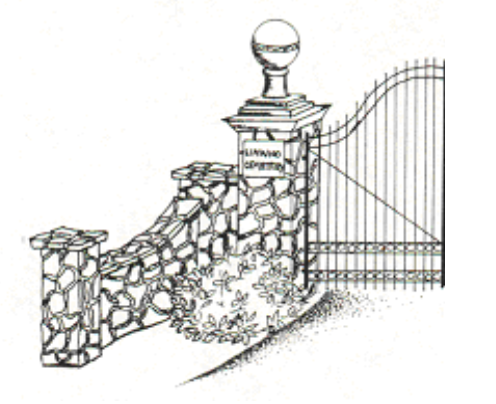
About Historic Linwood Cemetery
By orders from the Georgia General Assembly, Edward Lloyd Thomas was sent to the falls on the Chattahoochee River to survey land on which to raise a town on the outskirts of the southern frontier. He brought along with him his son Truman to help with the survey. The year 1828 was born into a bitter winter and, as the harsh months wore on, young Truman fell ill. He succumbed to the cold and passed away on March 26th in the wilderness of what would become the neighborhood known as Linwood. Grief-stricken, the father buried the son.
And the survey took a turn.
Reluctant to wander too far away from his child’s resting place, Edward spent the next month roaming the area around his loss. The four acres would eventually become Columbus’ first cemetery, with Truman at its center. While it remains unknown where the young man was buried and there is no memorial to mark his plot, the entire cemetery is itself a monument to him, for had Truman not fallen, there would have been no Linwood.
The City Cemetery, as Linwood was once known, is the oldest institution of the Columbus City Government, written into the city plan the very year of its first internment. Though the the earliest marked graves are 1829, one year after Columbus was laid out, burials were left unrecorded in the Old Cemetery, located atop the oak-lined hill. Families would simply choose their ground and bury their own. By 1845, a system had been implemented by which lots were plotted outside the Old Cemetery and receipts of sale were recorded, but with the Sexton presenting his list of burials on a monthly or quarterly basis without the records being compiled in a ledger until 1866, the records from this period are currently incomplete. However, at this very moment, the Sexton’s documents are actively being unearthed and digitized. This noble effort on behalf of the Linwood residents who have until now been hidden to history will at last honor those lost men and women for their contributions and sacrifice, and restore the part they played in laying the foundation that rose Columbus from the small outpost it was into the bustling mill town it was to become.
The City Cemetery took the name it stands with today in 1894, when the fashionable neighborhood that surrounded it took its name from a novel by Caroline Lee Hentz, who had spent a brief period of time in Columbus. The novel was titled Ernest Linwood. Ever since then, Linwood Cemetery has been more than just a memorial garden, more than just iron markers and marble headstones. Linwood Cemetery is a repository of Columbus history. To walk among its plots is to plot the financial, social, and spiritual growth of our city by the falls. So share a day with us and we will share our past with you.
Cemetery Tours
Historic Linwood Foundation hosts a large tour through Linwood Cemetery in October of every year. Called the Linwood Ramble, this is a fund-raiser for the Foundation. This usually brings about 300 visitors to hear stories about selected families told by family members or other volunteers. After the tour, attendees are invited to partake of a delicious spread of hors d’oeuvres and drinks.
Other tours through Historic Linwood Cemetery are available upon request at no charge. Many varied groups have visited the cemetery, from elementary school classes to college-level classes; from Scout troops to garden clubs. Please call the office at 706-321-8285 to arrange a tour or receive assistance in locating graves.
Cemetery hours
Gates open 7am-7pm daily
Linwood Foundation Hours
Monday-Thursday 9am-1pm
Closed Holidays

